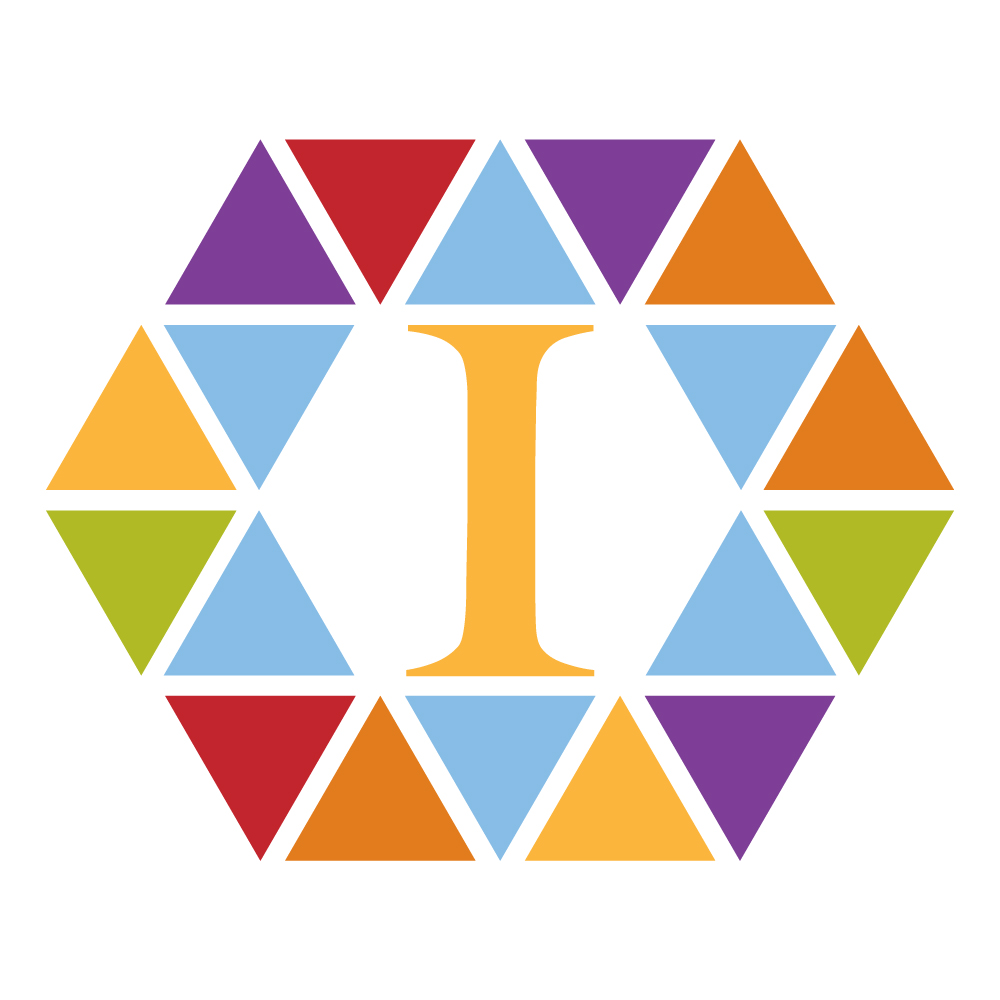Elementary
The Innovative School of Temple Beth Sholom is a progressive Elementary School designed to encourage and develop our understandings and practices within the social-constructivist approach to learning regarding the whole child. We are guided by the Reggio Emilia approach to learning. We foster academic achievement and 21st-century skills including empowering children and fostering a sense of agency.
Flow of the Day
Morning Meeting
This is an opportunity for us to come together as a community to adapt to the group’s needs, practice listening to and asking and answering questions. We share new thoughts, ideas and possibilities. Work for the day is also discussed.
Literacy Block
A balanced literacy curriculum includes: read alouds, word study, a writing workshop and a reading workshop. Reading is gradually acquired over years of instruction and practice that is balanced and addresses all components of reading:-phonemic awareness
-phonics
-fluency
-comprehension (includes vocabulary and text comprehension)
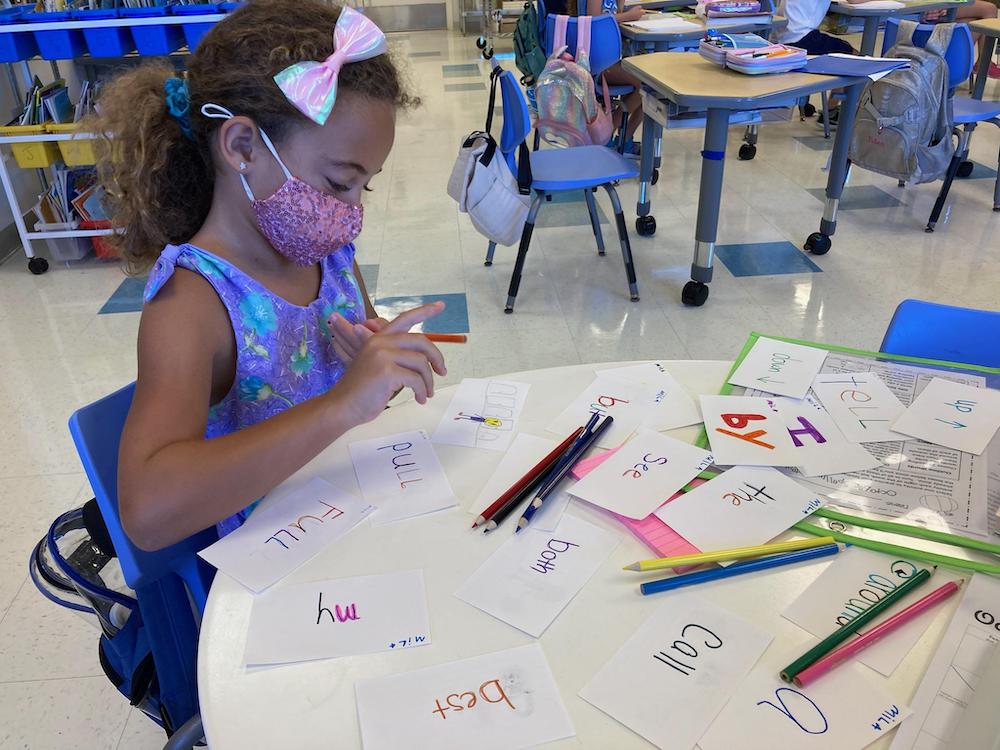
Snack/Lunch
At The Innovative School of Temple Beth Sholom we recognize the importance of innovation not only within our education but also within our culinary delights. We have a state of the art 1,000 square foot on-site kitchen where our meals are prepared daily. Nutrition is a vital component to our children’s physical development. Our ingredients are always fresh and delicious!
Physical Fitness
Learners participate in Starfit, dance, and yoga and go to the JCC. Learners focus on different ways to develop strength, flexibility, agility and coordination. In addition to basic movements and drills, learners incorporate cardiovascular exercises. In dance, children learn and create dance movements with partners and in groups. In yoga, learners begin to trust their bodies and build emotional and physical strength. At the JCC learners practice the rules and skills needed to play various organized sports with a coach.
Language Learning
Spanish is taught everyday. Formal Hebrew instruction starts in first grade.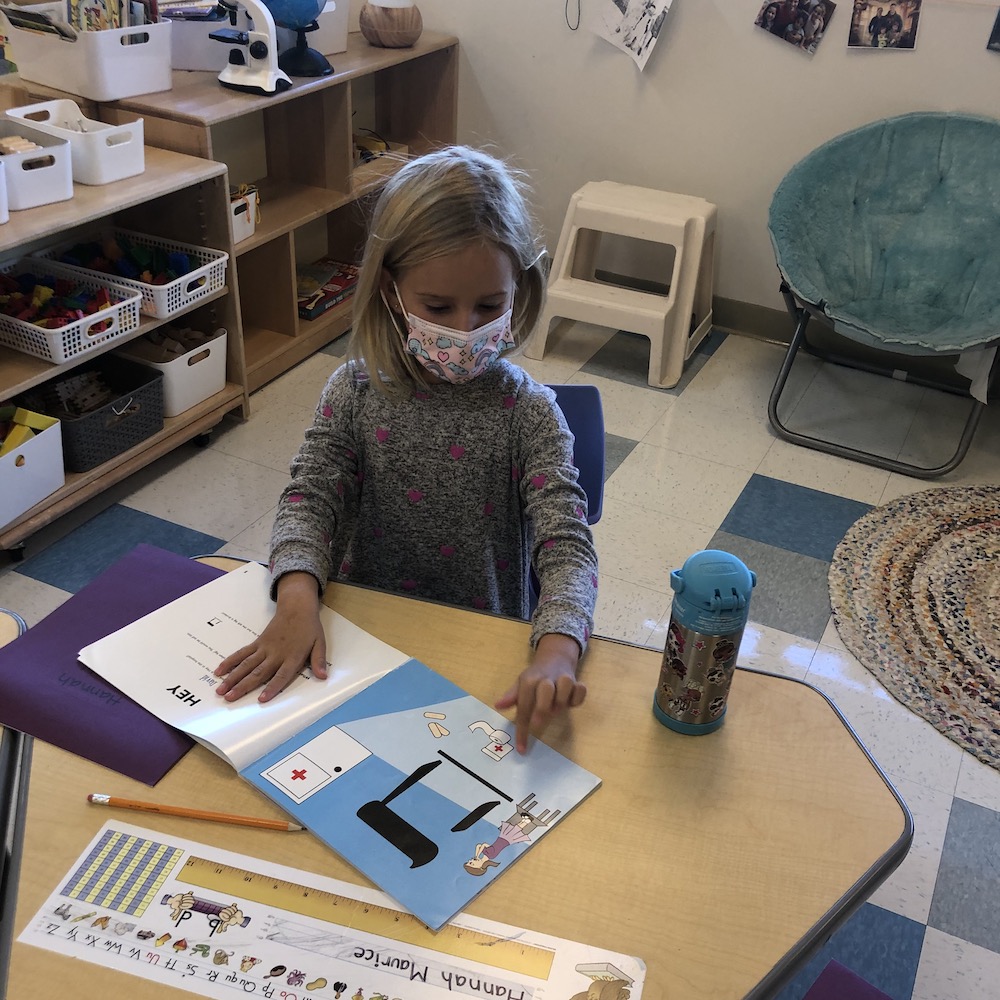
Free Play Outside
Learners have free play everyday.
Music
Learners have music twice a week. Learners explore their world through listening, singing, moving, playing instruments, and creating. As they develop basic skills, techniques, and processes in music, they strengthen their music vocabulary and music literacy. Learners remember, focus on, process, play, and create together.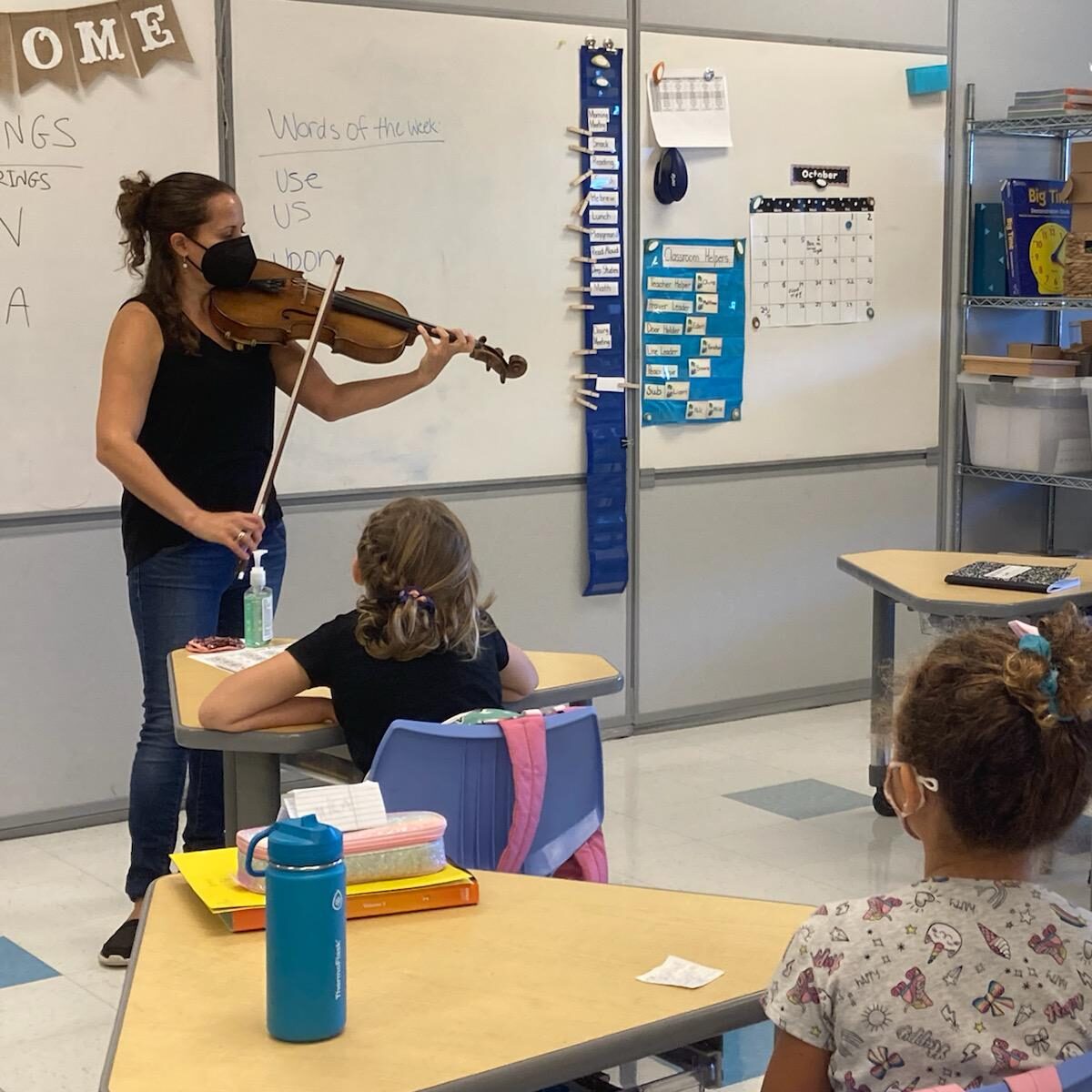
Math Block
During the math workshop, learners work as a whole class, independently, in pairs and in small groups. Learners use math in real-world situations. They think logically about math, write about math, and understand numbers through practice, games and manipulatives. Learners engage in meaningful mathematical problem-solving strategies and become critical thinkers.
Deep Studies (Projects)
Project ideas are presented to the learners by the teacher about a social studies or science learning arc and are developed through learners’ interests, questions and discussions. The learners are given the time and space to investigate, analyze, discuss, record, and predict based on their observations and questions to create theories of understanding.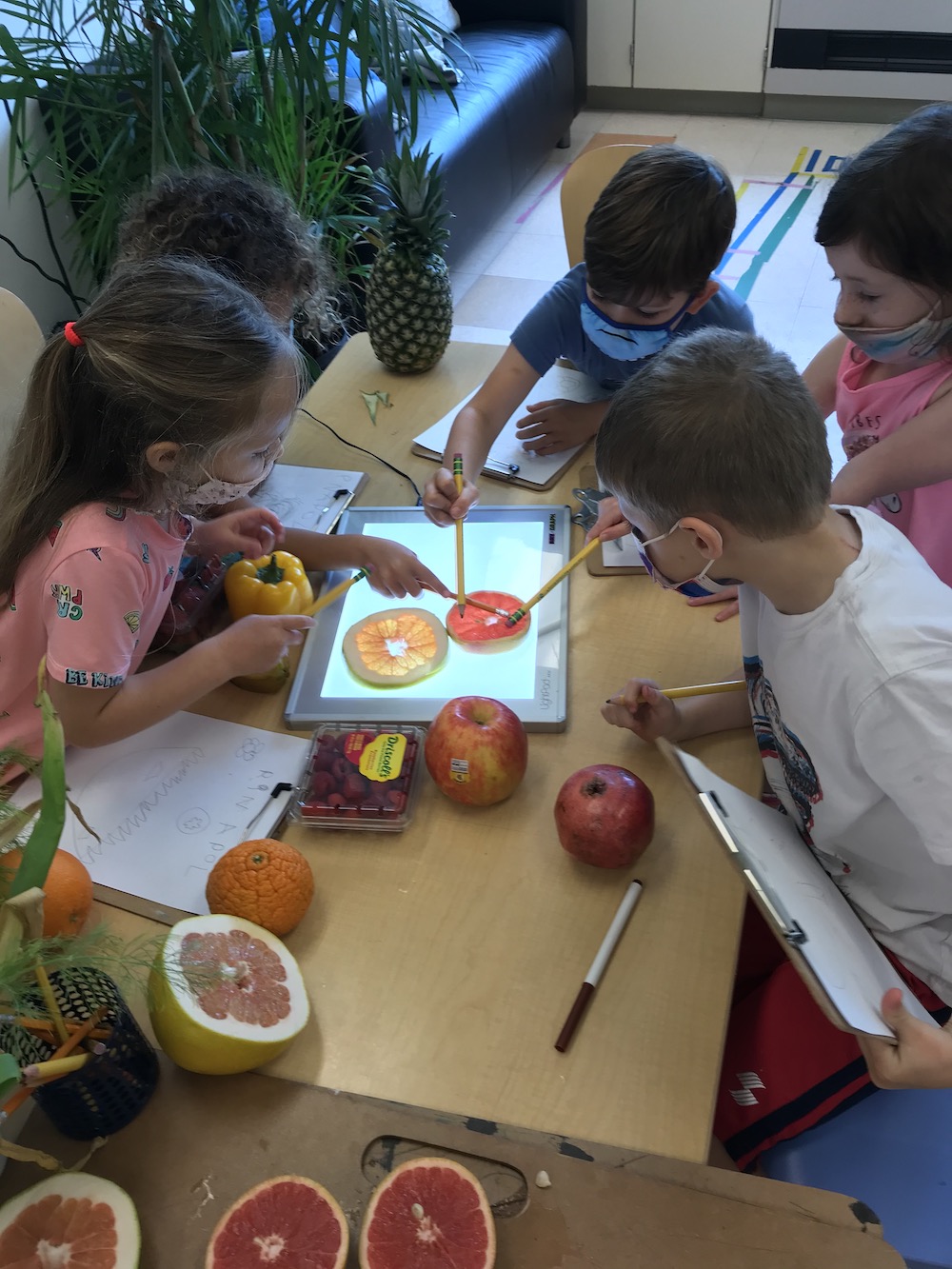
Shabbat
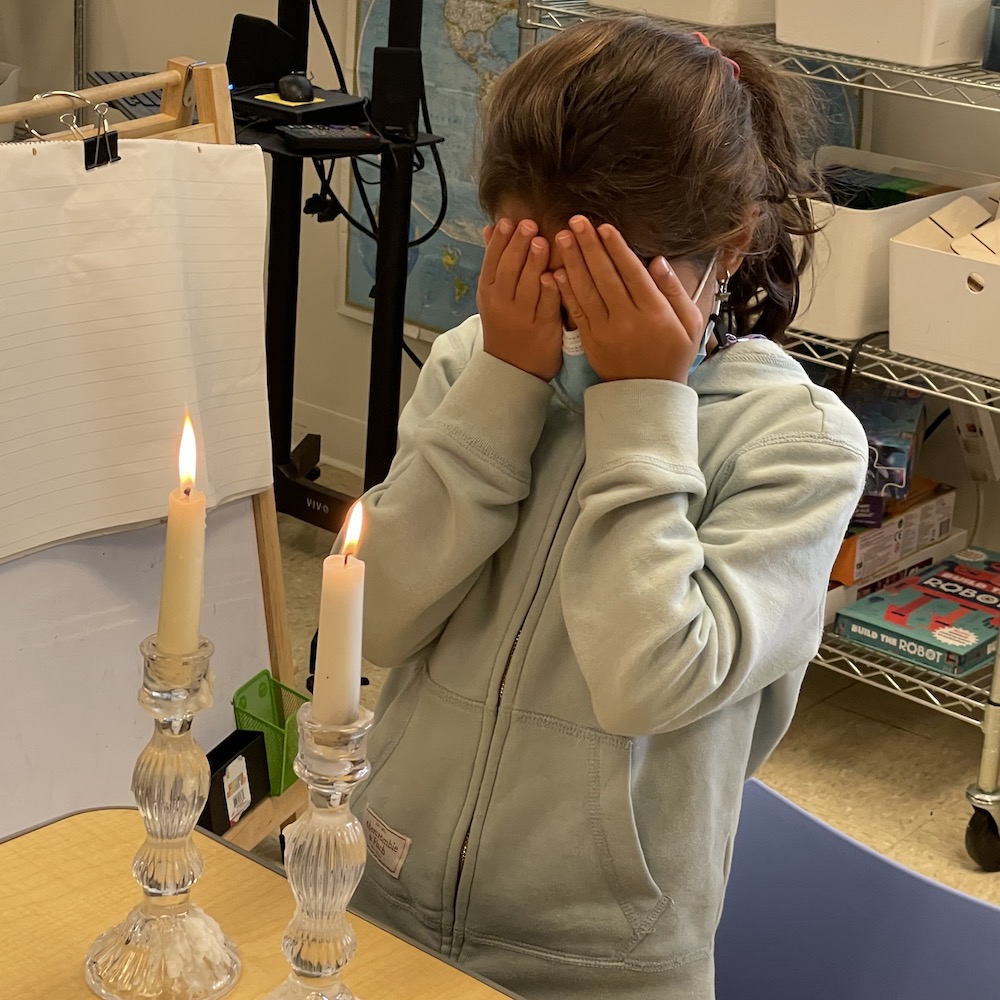
Judaic Studies
Learners explore all of the Jewish holidays. Traditional customs and symbols are reviewed throughout the year. In addition, learners explore Jewish values that focus on themselves as individuals, relationships with friends and family, and our community and the world at large.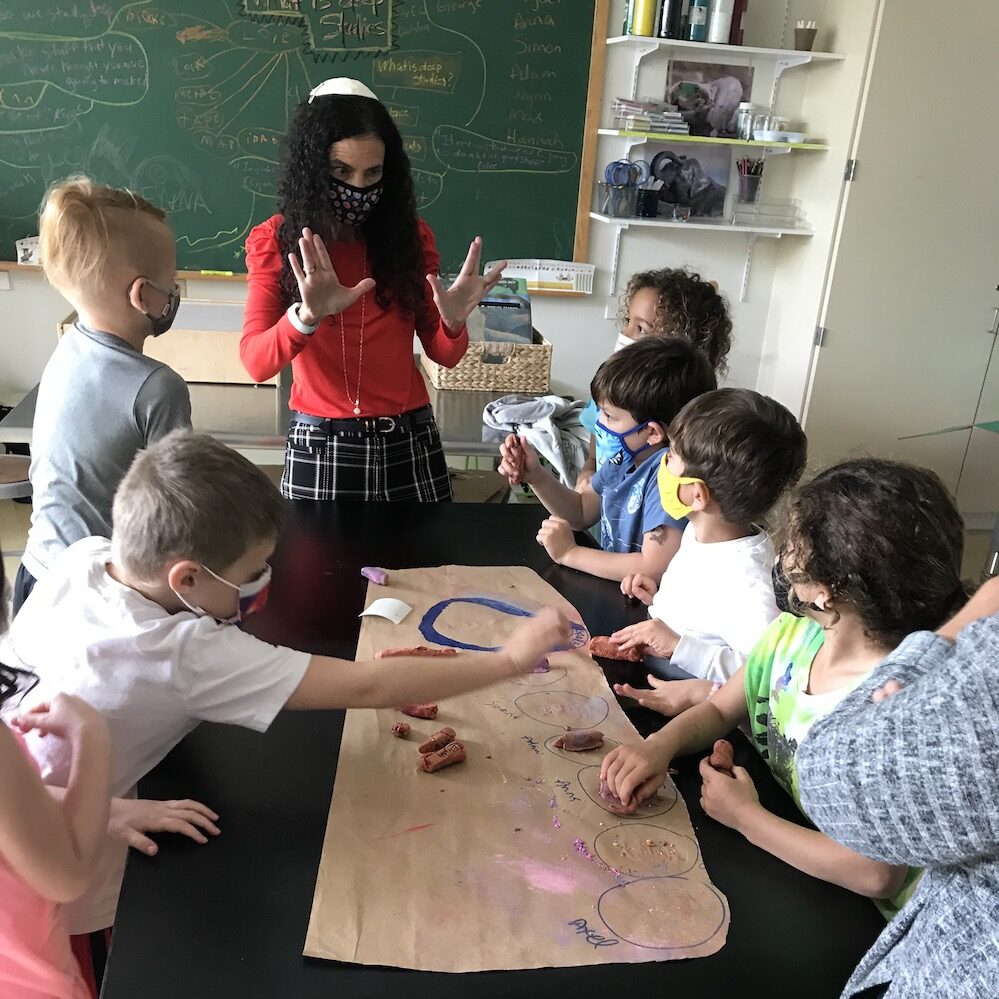
Learning Concepts and Goals
At The Innovative School of Temple Beth Sholom, our goal is for children to love learning. Our curriculum is anchored in meaningful experiences, providing learning opportunities that promote collaboration, critical thinking, and inquiry. With a child-directed approach always at the forefront, teaching and learning are authentic, and we intentionally design our learning experiences to foster inquiry, communication, and creative expression. Through ongoing observation and assessment of the learning process, our educators mindfully plan curriculum. Learning standards and goals undergird these experiences and processes.
Literacy: Reading, Writing and Word Study
Our goal is for learners to read and write independently and fluently. We help learners gain the appropriate skills and strategies needed to develop a true joy for reading and writing. Learners develop their literacy concepts and skills through whole class, small group, and one-on-one instruction. Teachers College Reading and Writing Workshops and Fundations Word Study are used to support literacy learning.
Literacy curriculum builds upon the learners’ prior knowledge gained in pre-school, continuing with the immersion in a language-rich environment, while focusing on the building of alphabetic knowledge and phonemic awareness skills. Literacy experiences are play-based, interactive and hands-on. Read alouds, shared reading and perusing books in the classroom library are core pieces to the kindergarten literacy program. The writing process encourages the expression of language. Children share their stories, thoughts, and wonderings, enabling them to develop their own “voice” as they grow as readers and writers. Learners continue to gain comfort with writing tools and letter formation. Kindergartners enjoy sharing their writing and thoughts about stories with their peers — they experience first-hand the need for and joy of sharing stories and working collaboratively with others to generate writing projects.
Reading, writing, and word study skills and concepts are taught explicitly and practiced each day. Using a balanced literacy model, learners will develop appropriate skills and strategies needed to read, spell, and write texts of various genres and for different purposes. It is a goal for children to feel that what they learn as readers and writers has meaningful and practical application in school and beyond. We understand that first graders will arrive with a variety of skill levels in reading. Through direct teaching and individual assessment, teachers learn about the strengths and needs of each reader. Throughout the year, the learners are developing decoding skills, fluency, comprehension strategies, and inferential thinking. In writing, they are learning to draft, revise, edit, and publish their work. Children share their stories, thoughts, and wonderings, enabling them to develop their own voice as they grow as readers and writers. First graders develop control of their letter formation through a handwriting program. Learners receive consistent word study instruction to develop connections to sounds and letters involved in their reading, writing, and spelling. In addition, first graders learn strategies for applying spelling patterns and core sight words into the proofreading and editing of their written work.
Reading, writing, and word study skills and concepts are taught explicitly and practiced each day. In second grade, the emphasis shifts to more complex decoding skills and more sophisticated comprehension skills. The books evolve to take on more nuanced characters/traits and situations and exciting plots.
We expect the children to share and express their thinking and specific ideas about their reading in both verbal and written form. Second graders will write in a variety of genres and deepen their understanding of the writing process: generating ideas, drafting, revising, editing and publishing. Children share their stories, thoughts and wonderings, enabling them to develop their own voice as they grow as readers and writers. Teachers introduce diverse mentor texts to inspire their students’ developing writing styles. The second grade literacy program also focuses on writing mechanics, punctuation, grammar, and capitalization. Spelling concepts advance to more complex patterns and syllable types; students’ sight-word repertoire expands as they continue to commit such words to memory.
Reading, writing, and word study skills and concepts are taught explicitly and practiced each day. In third grade, children are transitioning from learning-to-read to reading-to-learn. Learners immerse themselves in ‘just right’ fiction books and expository non-fiction. Vocabulary development, envisionment, ascertaining main ideas, recognizing text infrastructure, and thinking deeply are some skills directly taught and practiced. As the books evolve to take on nuanced characters/traits, situations, and exciting plots, we expect the children to express their thinking and ideas about their reading in both verbal and written form. Expanding from second grade, third graders continue to write longer and more thoroughly. Teachers continue to model and directly teach skills to support: drafting and revising; synthesizing and organizing; and writing persuasively about meaningful topics. The third grade literacy program also focuses on writing mechanics, punctuation, grammar, and capitalization. Spelling concepts advance to more complex patterns and syllable types; students’ sight-word repertoire expands as they continue to commit such words to memory.
Learners progress with the essentials of quality reading instruction (the framework that informs mini lessons, one-on-one conferences and small group strategy lessons) continue to be the backbone of Reading Workshop. Learners begin to refer to relevant details and/or examples from sources to back up their thinking and demonstrate authentic understanding of a text. At this stage in a young reader’s life, a main teaching goal is to empower learners to develop their own ideas and interpretations about complex characters and themes.
Research becomes front and center as learners investigate topics and explore history while developing skills in cross-text synthesis, close reading, analyzing, comparing/contrasting and evaluating multiple points of view. The writing process works in tandem with reading. Learners will try their hand at opinion, information and narrative writing, and further understand the transfer of perspective from reading to be brought to their writing. Fourth Graders delve into developing believable characters with struggles and motivations. As learners embark on thesis-driven persuasive essays, they are mindful of organization as evidence is gathered to support and express opinions on a topic they know about; historical research reports will demonstrate use of details to vividly describe events from long ago. Spelling concepts, vocabulary and grammar is taught in a highly explicit, multi-sensory way. Daily instruction to support orthographic knowledge allows for more fluid, joyful, and efficient reading, spelling and writing.
Fifth Grade learners at The Innovative School will continue to be encouraged to make connections between literature and their own lives. They will be inspired to read closely, observe story elements, and compare and contrast texts with similar themes. Age-appropriate texts will be selected with an understanding and awareness towards racial, ethnic, socio-economic, and gender diversity. Non-fiction texts become more complex, and the following skills will be more deeply explored: fluency, word solving strategies, research, and perspective.
The social aspect of reading continues with book clubs as learners are held accountable to share higher level thinking, how authors develop characters and themes, and metaphorical, as well as analytical thinking. Learners will design, write and revise literary essays. They will continue to grow ideas about the texts they read, which in turn, instills the practice of reading interpretively and carefully – to identify evidence that supports thinking. Learners will have opportunities for an increased nuanced sense of language (including vocabulary and grammar) to work in authoring a wide variety of writing, from short creative pieces to culminating essays – both creative and expository. An overarching goal for Fifth Grade learners: to continue to develop as adept readers, compelling writers, skilled speakers and active listeners.
Math
Learners use math in real-world situations. They think logically about math, write about math, and understand numbers through games and manipulatives. Learners engage in meaningful mathematical problem-solving strategies and become critical thinkers. We use TERC Math Investigations to support this learning.
Counting is a central focus in the kindergarten curriculum. As learners develop accurate counting strategies, they also build an understanding of how numbers in the counting sequence are related. They develop an understanding of one less, one more, greater than, less than and equal to. They develop language for describing quantitative comparisons as they count and compare quantities. Learners’ work in composing and decomposing numbers culminates in an understanding of place value. The counting experiences build a bridge to the operations of addition and subtraction. Additionally, learners’ work with measurement, geometry, and sorting data begins with real-world experiences. Our curriculum urges them to think mathematically by creating an environment where “students are doing, thinking, and talking about significant mathematics.”
Learners build on the work of composing and decomposing numbers to further support number sense and develop strategies for understanding the basic principles of addition and subtraction. To support these concepts, the curriculum incorporates math racks and number lines and introduces ten-frames. Learners also learn to recognize place value by exploring how a digit’s value depends on its position within a number. Geometry, measurement, and data are also explored. Our curriculum urges learners to think mathematically by creating an environment where students are doing, thinking, and talking about significant mathematics.”
Second graders begin the year reviewing counting big numbers and number sequence. They learn to recognize and identify coins and their values. Learners will review place value, focusing on how written numerals are representations of a base-ten number system. Learners develop fluency with addition facts and associated subtraction facts over the course of the year. To build a foundation for multiplication, students build and model multiplicative situations that involve the accumulation of equal groups. Learners observe and describe attributes of two-dimensional and three-dimensional shapes. Work with fractions is directly related to geometry. Learners study measurement in a variety of contexts. Second grade learners use Venn diagrams, bar graphs, line plots and other visual representations to investigate data. Our curriculum urges learners to think mathematically by creating an environment where “students are doing, thinking, and talking about significant mathematics.”
Focuses on understanding the meaning of multiplication and grasping the inverse relationship between multiplication and division. They develop fluency with the multiplication facts and find factors of numbers up to 100 while examining the relationship between multiplication and division. Learners solve multiplication and division problems, multiplying by multiples of 10, and learning the remaining multiplication facts to 10 × 10. They also develop strategies for adding and subtracting two-digit and three-digit numbers with sums and differences to 400. Learners add multiples of 10 and 100 to, and subtract them from, three-digit numbers. They learn to use multiples of 100 as landmarks as they solve addition and subtraction problems with three-digit numbers, including problems that involve liquid volume and mass. Third graders understand and extend knowledge of place value and the number system to 1,000, and add and subtract accurately and efficiently. Students use a place value to represent numbers as hundreds, tens, and ones, and find equivalent ways to use hundreds, tens, and ones to represent a given number. Learners use bar graphs, pictographs, and line plots to represent, describe, and compare data. They solve one- and two-step “how many more” and “how many less” problems using information presented in the graphs. Learners also generate measurement data in inches, half-inches, feet, and yards. They focus on classifying 2-D figures and understanding and finding perimeter and area using standard units of measurement. Third graders study the meaning of fractions as numbers and as equal parts of a whole; reasoning about equivalent fractions; comparing fractions; and using notation to model fractions and fraction relationships.
Learners in Fourth Grade grow in their understanding and fluency of addition and subtraction up to one million. In addition, they become efficient problem solvers with multi-digit multiplication and division with multi-digit dividends. Learners develop strategies and skills around equivalence, addition, subtraction and multiplication of fractions and mixed numbers. Decimals, fractions and place value are also explored as Fourth Graders develop greater fluency around decimal and whole number operations. Their geometric thinking evolves to incorporate concepts of perimeter and area, by using formulas, as well as angle measurement and symmetry of 2-D and 3-D figures.
Fifth graders extend their understanding of the processes of multiplication and division by multiplying and dividing multi-digit numbers. Learners develop fluency with addition and subtraction of fractions and are introduced to the multiplication and division of fractions. They review fractional parts and follow a clear progression that appropriately increases rigor over time. Learners study the connection of fractions and decimals and learn different ways to represent decimals. Learners also practice converting metric units of measurement. Fifth graders will be able to solve problems using these concepts in real-world scenarios.
Social Studies
Learning how to live and become a morally conscious member of a community is a central concept for our children. Our learners engage in meaningful studies around civics, history, economics, and geography where they use their problem solving, critical thinking, collaboration, inquiry, and perspective-taking skills. The children feel empowered that their voice makes a difference and begin to understand that others have similar or differing perspectives. Learning to respect these differences helps develop empathy, and children become equipped to constructively respond to and understand differences. They begin to make powerful connections between past and future and begin to develop a better understanding of the world around them.
Engages in deep studies around the social studies arc “Who Am I?” As learners study themselves, their family, and their school, they experience many social skills, including problem solving and collaboration. They are guided by the essential questions: “Who am I? Who am I within my family? Who am I within my school?” Learners are thinking deeply about their identities and the identities of others to grow a better understanding of their place in the world. Through this process, they connect to and empathize with people in their school community. They use knowledge and perspective as they uncover a need their class or school may have, and then take constructive and collaborative steps to work toward solutions. They feel empowered that their voice makes a difference. Through experiences, materials, and interviews, learners will enhance their understanding of who they are.
Learners engage in deep studies around the social studies arc “Where We Live.” As learners study our school neighborhood, Miami Beach, they develop many social skills, including problem solving and collaboration. They are guided by the essential questions: “What is a neighborhood? How does a neighborhood serve the people who live and work there?” Learners think deeply about the needs and wants of community members. Through this process, learners connect to and empathize with the things workers and families need. Learners use knowledge and perspective as they uncover a need the community has, and then take constructive and collaborative steps to work toward solutions. Learners feel empowered that their voice makes a difference. Learners will partner with community members and visit places around Miami Beach to enhance their experiences and understandings.
Learners engage in deep studies around the social studies arc “Florida, the Geography and its Wildlife.” As learners study different ecosystems in Florida, they develop many social skills, including discussion, problem solving and collaboration. Learners are guided by the essential questions: “How do different habitats affect ways of life? What is the relationship between Florida’s geography and its wildlife?” Learners think deeply about Florida’s diverse habitats. Through this process, learners connect to and empathize with how Florida’s habitats affect people and animals. Learners use knowledge and perspective as they uncover a need the state ecosystems have, and then take constructive and collaborative action to work towards solutions. Second graders feel empowered that their research and voice makes a difference. Learners will visit some of Florida’s unique environments to enhance their experience and understanding.
Learners engage in research-based, collaborative studies around the Social Studies arc, “Powerful Floridians, Then and Now.” As learners study the history, cultures, and human impact of Floridians over time, they gain perspective on Florida today. Learners are guided by the essential questions: “How do individuals represent history, cultures, and human relationships? How can we compare and contrast issues of long ago with issues of today?” “How does history affect our lives today?” The studies will begin with Native Americans. In learning about the ways in which Florida has developed and changed, learners will embark on a social justice study. Children will study the important, influential individuals/activists who fought for a need, an issue, a problem. Learners will examine the issues the individuals faced, the important events of their lives, their human characteristics, the ways they fought for their beliefs, and what they accomplished. Through hands-on investigative research and content knowledge gained from literature, children will express understanding through various modalities and materials. Through this inquiry-based process and direct experience from field trips, guest speakers, and first-hand research, learners use knowledge and perspective to take constructive and dynamic steps to solidify their place in the world today. Third graders will have authentic opportunities to make deeper connections between Florida long ago and now, and the powerful individuals who led the way, and still inspire us today.
Learners engage more deeply in demonstrating an understanding of the physical geographic features that define places and regions of Florida. As learners research, discuss, and write to describe the social, political, cultural and economic life among Floridians (historically), they will build upon such anchored knowledge and understanding to the structures, functions, and powers of the local, state and federal governments as described in the U.S. Constitution. Learners are guided by the essential questions: “How has Florida grown? Who came to Florida, and how did it affect the state? Who came to the United States? And, what was life like for such immigrants as opposed to people who had lived in the US?” As Fourth Grade learners develop a deeper understanding of the story of the United States, its history in terms of its vast and varied geography, its many ways of immigration, and continuous diversity — they will gain a grounding perspective, and ultimately see elements of themselves and their families reflected in this study.
In Fifth Grade, our Social Studies-based program focuses on the study of history by authentically engaging learners in the practice of thinking like a historian. In researching daily life from selected time periods, learners will investigate in-depth studies that will allow for a multi-faceted understanding into the political, economic, and social aspects of a culture. In addition, Social Studies encompasses social justice, geography, archeology, sociology, philosophy, and religion. Concepts will be meaningfully explored through research, literature, hands-on collaborative projects, group discussions, and experiences. The Social Studies curriculum aims to develop an appreciation for the complexities of different cultures, people, customs and religions that constituted the ancient world, and thus ground learners in knowing how we came to be as a people, today.
Science
Children are naturally curious. Because we embrace this, our science experiences are inquiry-based. We explore four disciplinary science core ideas (science arcs): Earth and space science; life science; physical science; and engineering, technology, and applications of science. The learners are given the time and space to investigate, manipulate, analyze, discuss, record, and predict based on their observations and questions to create theories of understanding.
Learners create theories of understanding during deep studies around the essential question “Who Am I?”, they gain an awareness and curiosity of their immediate school environment including: forces and interactions (pushes and pulls); interdependent relationships in ecosystems (plants, humans, and animals); weather and climate; and the study of engineering and design. During the studies and playful inquiry opportunities, learners are given the time and space to ask questions, plan and carry out investigations, and analyze and interpret data based on their observations and questions.
Learners create theories of understanding during studies around the arc “Where We Live,” they experience how to observe and manipulate sound and light; study patterns and cycles of space systems; gain an awareness of the structure and function of plants and animals (including humans); explore the ocean; and learn about engineering and design. During the studies and playful inquiry opportunities, learners are given the time and space to ask questions, plan and carry out investigations, and analyze and interpret data based on their observations and questions.
Learners create theories of understanding during deep studies around the arc “Florida – the Geography and its Wildlife ,” they study the structure and properties of matter; explore interdependent relationships of plants and animals (including humans) in ecosystems; discover processes that shape the Earth, including the role of water; and learn about engineering and design. During the studies and playful inquiry opportunities, learners are given the time and space to ask questions, plan and carry out investigations, and analyze and interpret data based on their observations and questions.
Learners create theories of understanding during Deep Studies around the learning arc, “Powerful Floridians, Then and Now”, third graders explore weather patterns and how the impact of weather-related hazards can be reduced. Learners study organisms’ traits, compare and contrast plants, animals and environments of Florida’s past and present. In addition, they observe what happens to plants and animals when the environment changes. Third graders investigate equal and unequal forces of an object and engage in a study of magnets. Learners are given the time and space to ask questions, define problems, develop and use models, construct explanations and communicate information learned.
As much as possible, science investigation is integrated into and supported by the social studies, year-long, classroom deep studies. Science studies are connected with a community action or service learning component, either inside the school or in the larger community. Fourth grade learners ask questions, develop and use models, plan and carry out investigations, analyze and interpret data, construct explanations and design solutions, engage in argument from evidence, and obtain, evaluate, and communicate information. Learners will use these skills to describe patterns of waves. They will develop an understanding of the effects of weathering or the rate of erosion by water, ice, wind, or vegetation. In order to describe patterns of Earth’s features, learners will analyze and interpret data from maps. Fourth graders are expected to develop an understanding that plants and animals have internal and external structures that function to support survival, growth, behavior, and reproduction. They will describe that an object can be seen when light reflected from its surface enters the eye. Learners will use evidence to construct an explanation of the relationship between the speed and energy of an object and how that energy can be transferred from place to place by sound, light, heat, and electric currents or from object to object through collisions.
Fifth grade learners ask questions, develop and use models, plan and carry out investigations, analyze and interpret data, construct explanations and design solutions, engage in argument from evidence, and obtain, evaluate, and communicate information. Fifth Grade learners will use these practices to demonstrate the understanding of the core ideas about the solar system, the water cycle, weather and climate, properties of matter, energy, forces of motion, and the structure and function of the human body. Science studies are often connected with a community action or service learning component, either inside the school or in the larger community.
